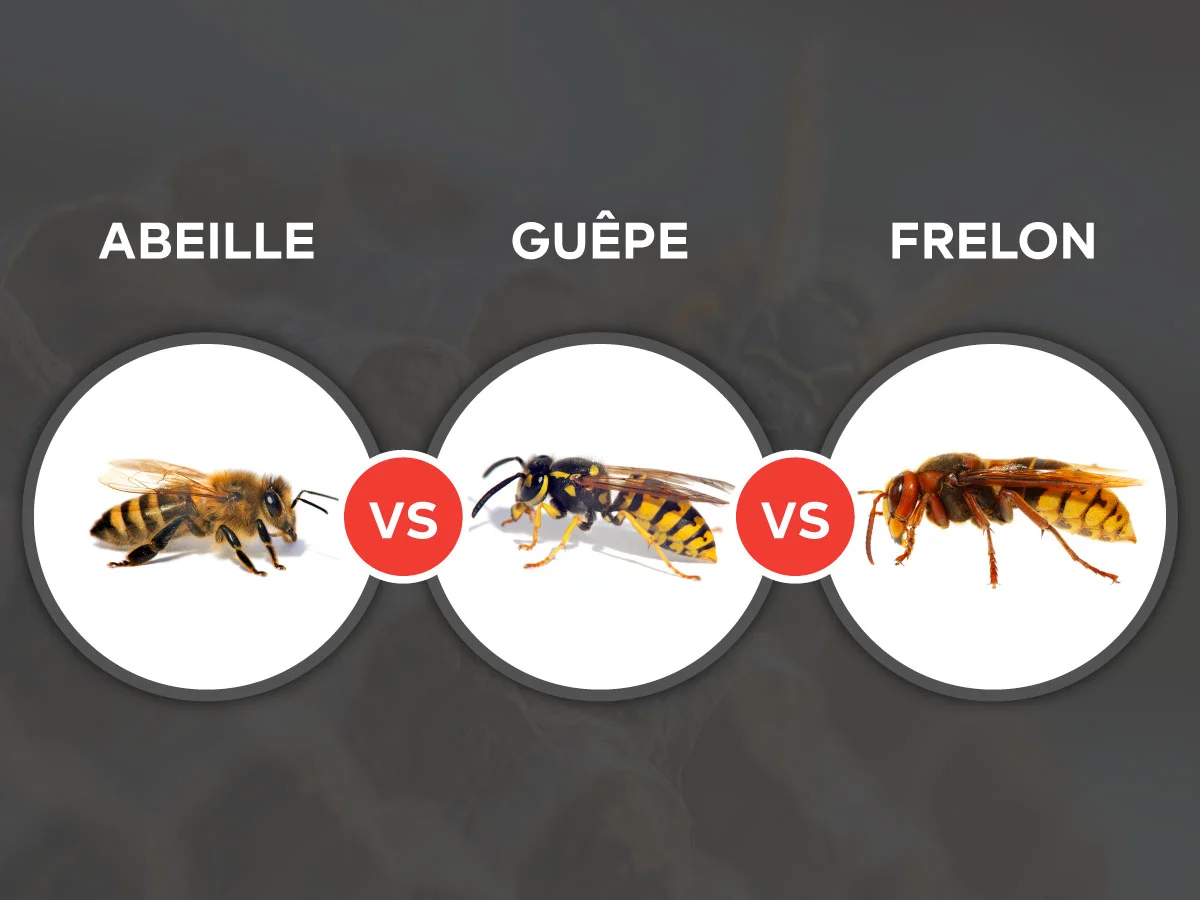These are all flying insects with striped colours and a stinger. All are present in Québec. But they don’t all have the same role or the same behaviour. Read on to find out how you can tell them apart.
An important note, however: some people can be allergic to the venom injected by these insects or other insects of the order Hymenoptera. These allergic reactions include swelling of the tongue, lips, throat or eyes, difficulty breathing or swallowing, dizziness or discomfort, nausea, vomiting, generalized skin rash, fever. If you experience one of these symptoms after being stung by an insect, seek medical assistance immediately.
Why is it important to distinguish between a bee, a wasp and a hornet before deciding to eliminate them?
Because bees are part of a protected class of insects; indeed, for several years now, specialists have noted a significant drop in the global bee population.
Considering their essential role in the production of honey and pollination, legislation has even been adopted in Québec to limit any threat to their survival as much as possible. Therefore, it is crucial to be informed about the insect that’s causing you grief. Exterminating a bees’ nest is illegal except as a last resort and only upon the advice of a professional beekeeper.
You can differentiate these insects mostly by their appearance and size.
The Honey Bee (Apis mellifera)
The honey bee will generally be the smallest of the three; its body is shorter and stockier than the wasp’s and hornet’s. The bee also has more visible hair all over its body.
You’re dealing with a bee if:
- It’s rather small: 12 mm for a worker, 16 mm to 20 mm for the queen. The male (or drone) will be about 15 mm to 16 mm long.
- Its body looks visibly hairy and is short and stocky.
- It feeds on flowers … not in your dinner plate.
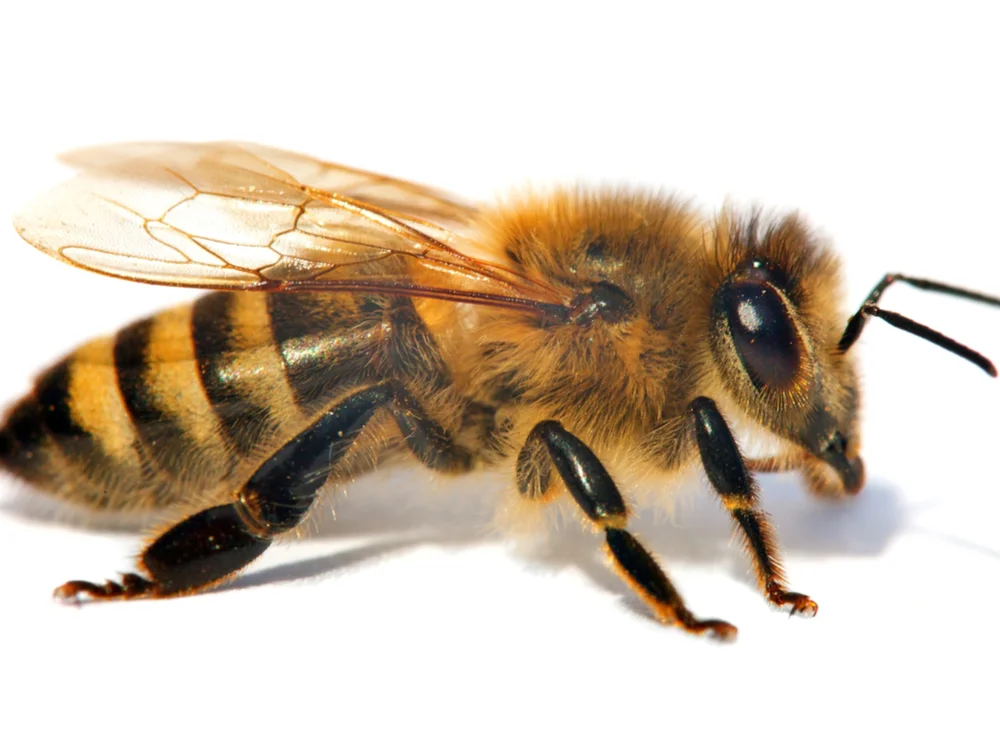
Unless you’re a beekeeper or live near one, there’s not much risk of coming face to face with these pollen collectors. In fact, in springtime they generally don’t travel more than 500 metres from their colony to forage for pollen, their main source of food. When flowers become rare with the approaching fall, however, they can travel up to 5 km to find food.
The bee is not aggressive by nature, except when it feels threatened. In such a case, it will use its stinger to sting and inject its venom, but only once … it will die afterward. Bee stings are painful and cause redness and swelling at the site of the sting. These effects last about 48 hours and should be monitored closely in case of allergic reaction.
The Wasp (genus: Vespula)
Here are three of the most commonly seen wasps in Québec:
Common Wasp (Vespula vulgaris)
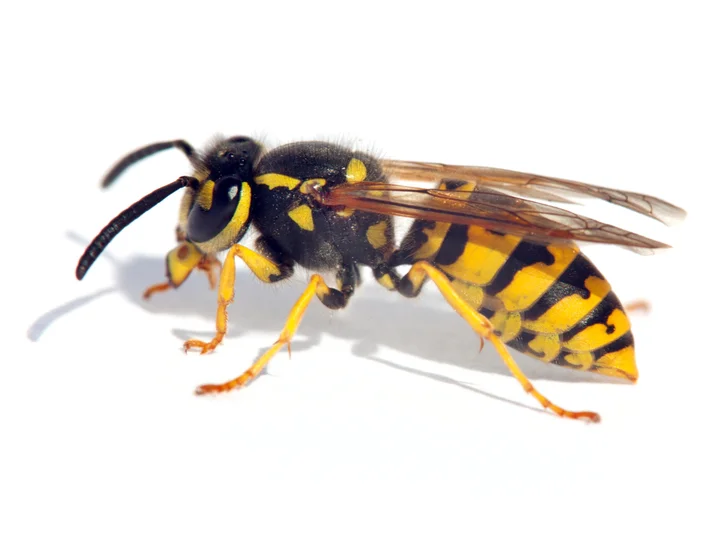
German Wasp (Vespula germanica):
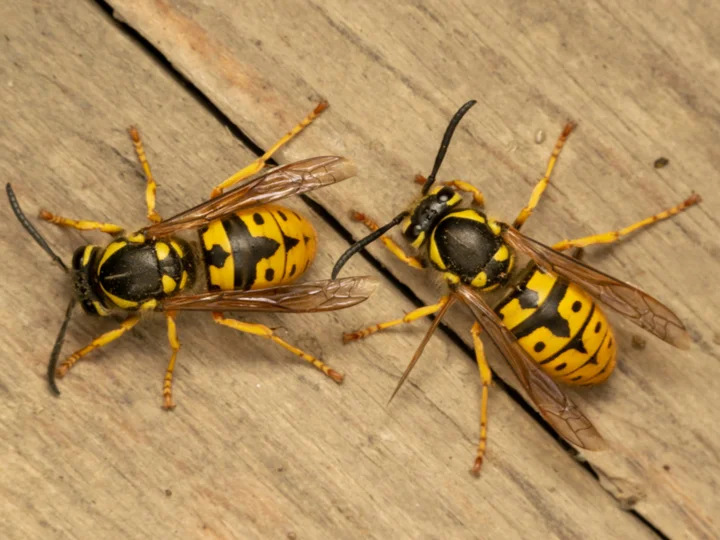
Eastern Yellowjacket—Queen (Vespula maculifrons):
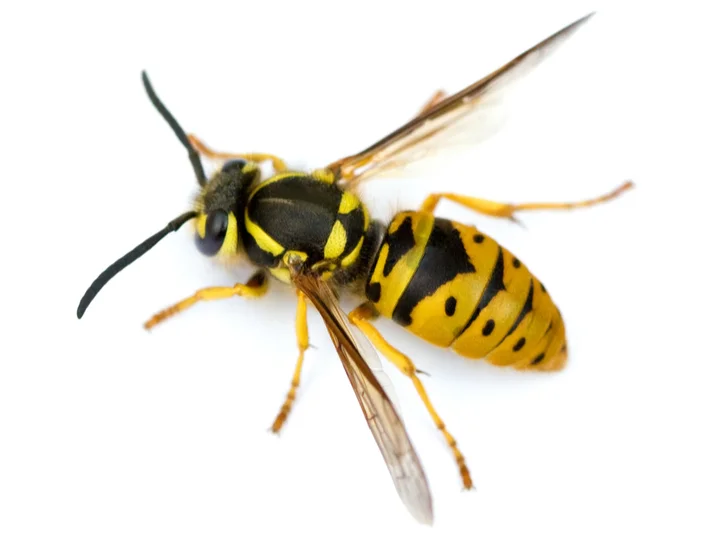
You’re probably dealing with a wasp if:
- It’s at least 10 mm in length, up to 25 mm for the queen.
- It has practically no hair on its body and has stripes of bright yellow and black on its abdomen.
- Its abdomen is long and slender, with a visible waist between its abdomen and thorax.
- It feeds not only on flowers, but also on any other source of sugar, fat or protein. It will not hesitate to come over to your dinner plate (or your garbage bin) if it smells something that could be more appetizing than what it can find in your garden.
Wasps of the genus Vespula are composed of three casts: the queen, the workers, and the males. The effects of a sting from a wasp are very similar to that of a bee; people who are allergic to bee stings must be extremely careful. A wasp has the ability to sting several times.
Several hundred of wasp species live in the province of Québec, among which the three most commonly found on the South Shore of Montréal are pictured above. They are social wasps (they live in colonies) who will protect their nest at the first sign of attack, even an accidental one.
A person suddenly approaching a nest, hitting it or stepping on it will be seen as an invader that must be chased away at all costs. So … be extremely careful!
Contrary to bees, wasps eat animal protein they bring back to the nest to feed their larvae with. Wasps get nourishment for themselves from almost any food that is sweet or decaying. That’s why they’re enormously attracted to humans’ food and waste, and why they always seem to want to accompany us on our summer picnics.
In fact, when they’re slowly whizzing around our table—and our head!—they’re trying to locate the exact source of an odour that has attracted them.
It’s possible to chase them away by installing lavender plants, lemon balm or scented geraniums around your terrace. Sudden movements or gestures will make them nervous more than anything else.
The European Hornet
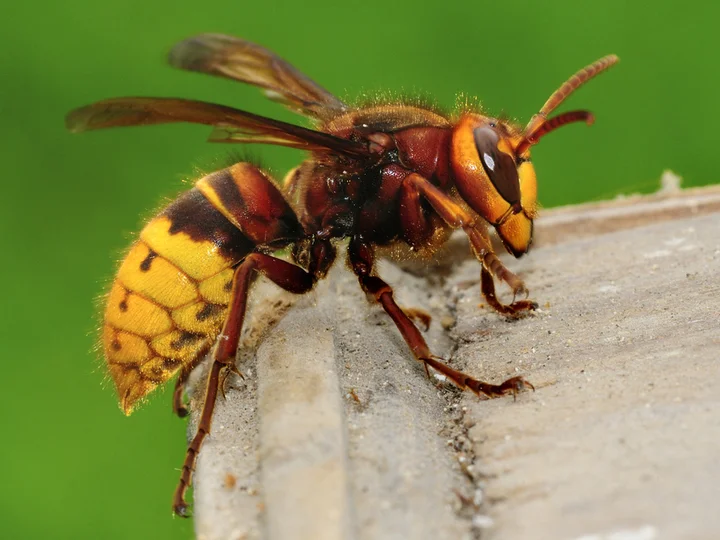
Imported from Europe, this insect was found and identified in Québec for the first time in 2004 in the city of Aylmer, and it now seems well established here. It looks very much like a wasp, except that its head and thorax are a rusty-brown colour instead of bright yellow. It is also a social insect that lives in colonies. The main difference between a hornet and a wasp is in size. A Vespa crabro worker measures between 18 mm and 25 mm long, and the queen can reach up to 40 mm long!
European hornets build nests of grey papier maché (mashed paper) and prefer to live in wooded areas because they feed on other insects and spiders. They will rarely make an appearance in our urban areas. However, like wasps, they will defend their nest against any real or apparent threat by stinging an intruder several times. And because its stinger has a wider diameter, its sting is more painful, albeit not fatal (except in cases of allergy to venom).
The Asian Giant Hornet (Vespa mandarinia
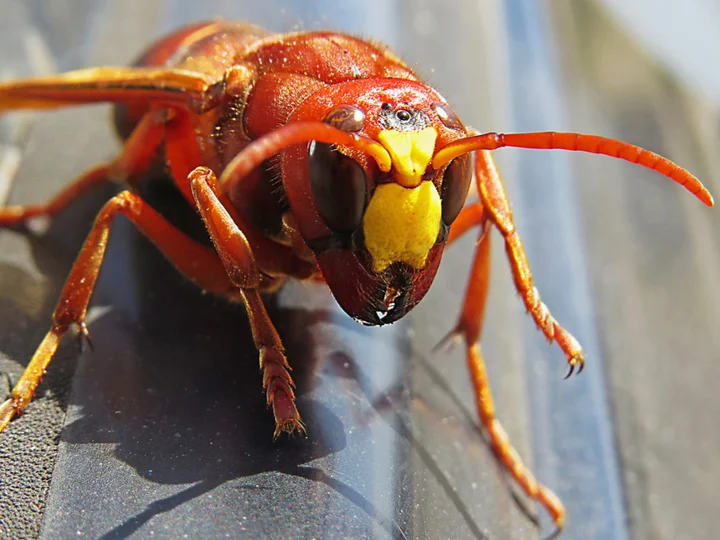
This hornet originates in the tempered and tropical regions of China, Korea, Japan and Northern India. It looks like a wasp, but it head is much larger and is solid bright yellow, orange or brown; it has big black eyes.
Also called the “murder hornet,” this giant wasp measures from 3.5 cm to 5 cm (or 35 mm to 50 mm!); its favourite prey is the bee, among many other insects. It is feared by beekeepers everywhere and by people who are allergic to insect venom. Its venom is so toxic that repeated stings can be fatal. Its long stinger can pierce through ordinary clothing and even through the protective equipment that beekeepers wear.
For the moment, its presence has not been reported in the province of Québec, but it was observed for the first time in 2019 in British Columbia, where a nest of Asian hornets was destroyed on Vancouver Island. A certain number of specialists do not currently believe these hornets could cross the barrier of the Rocky Mountains, but in their opinion this hornet might be able to survive Québec winters. Sanitary authorities are therefore on alert so as to prevent, at all costs, this giant hornet from reaching and spreading in our territory.
If you have noticed the increased presence of one of these types of biting insects near your home, do not hesitate to contact our company which offers the wasp and hornet nest destruction service in greater Montreal and everywhere on the South Shore.

